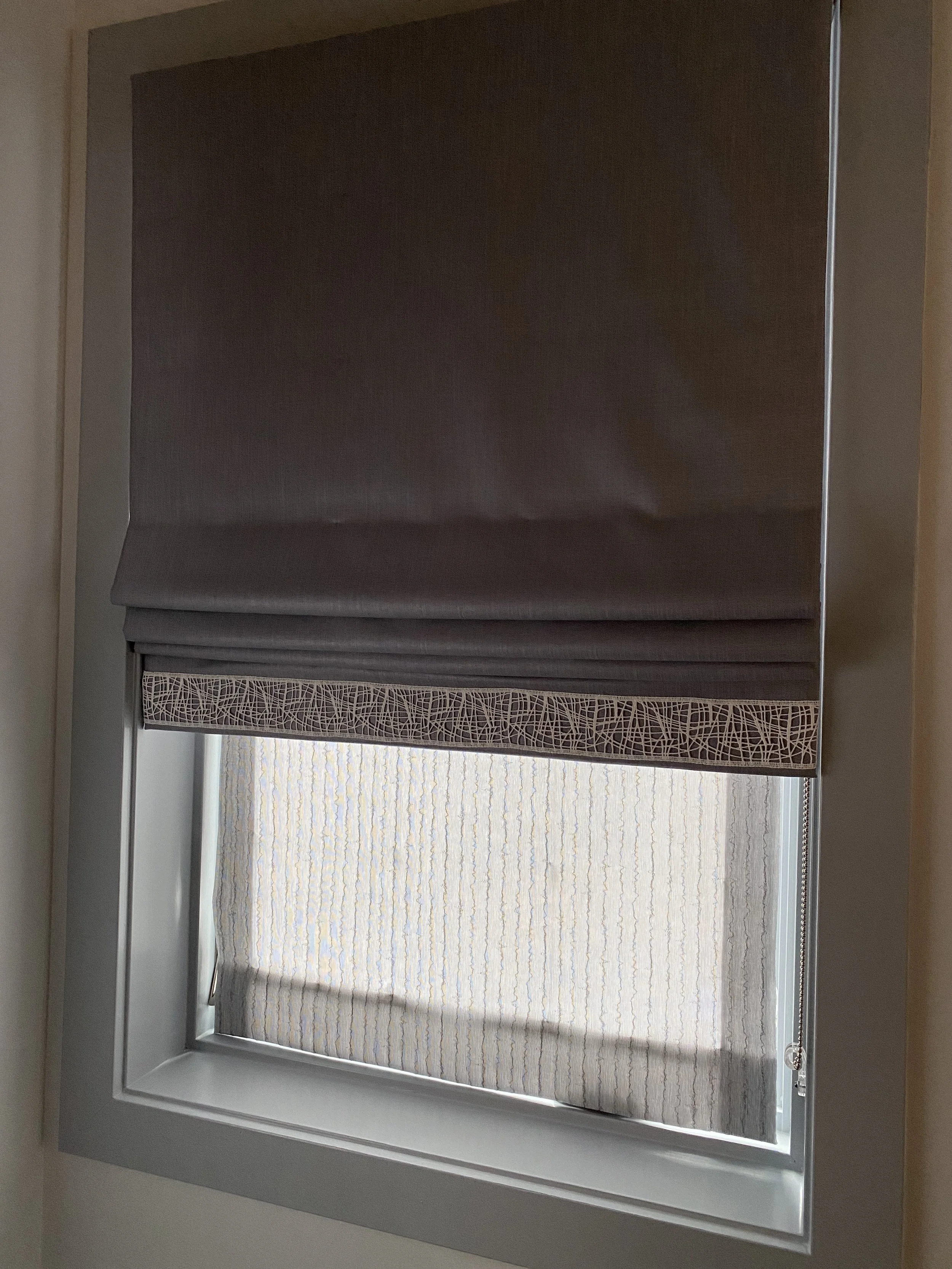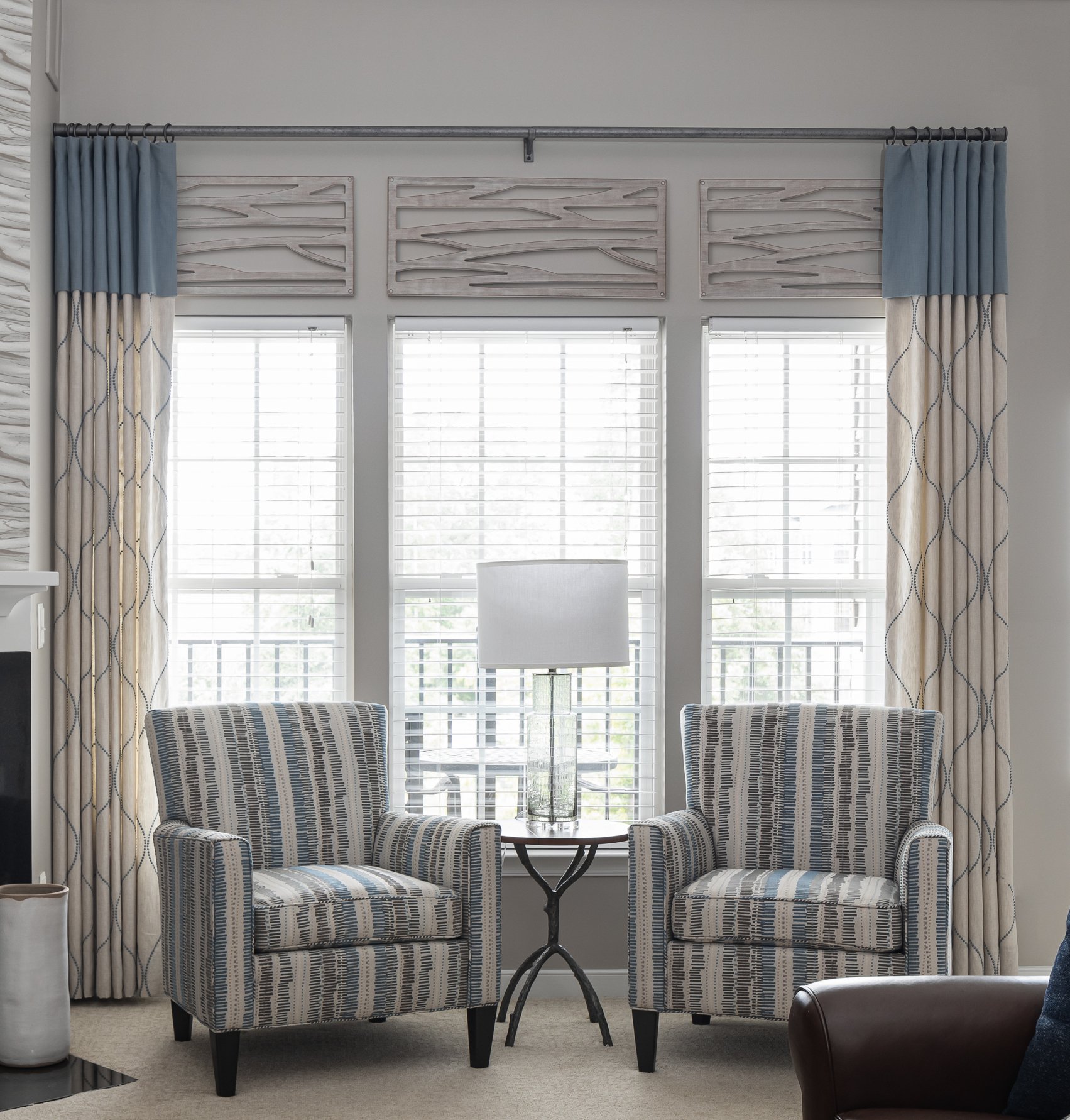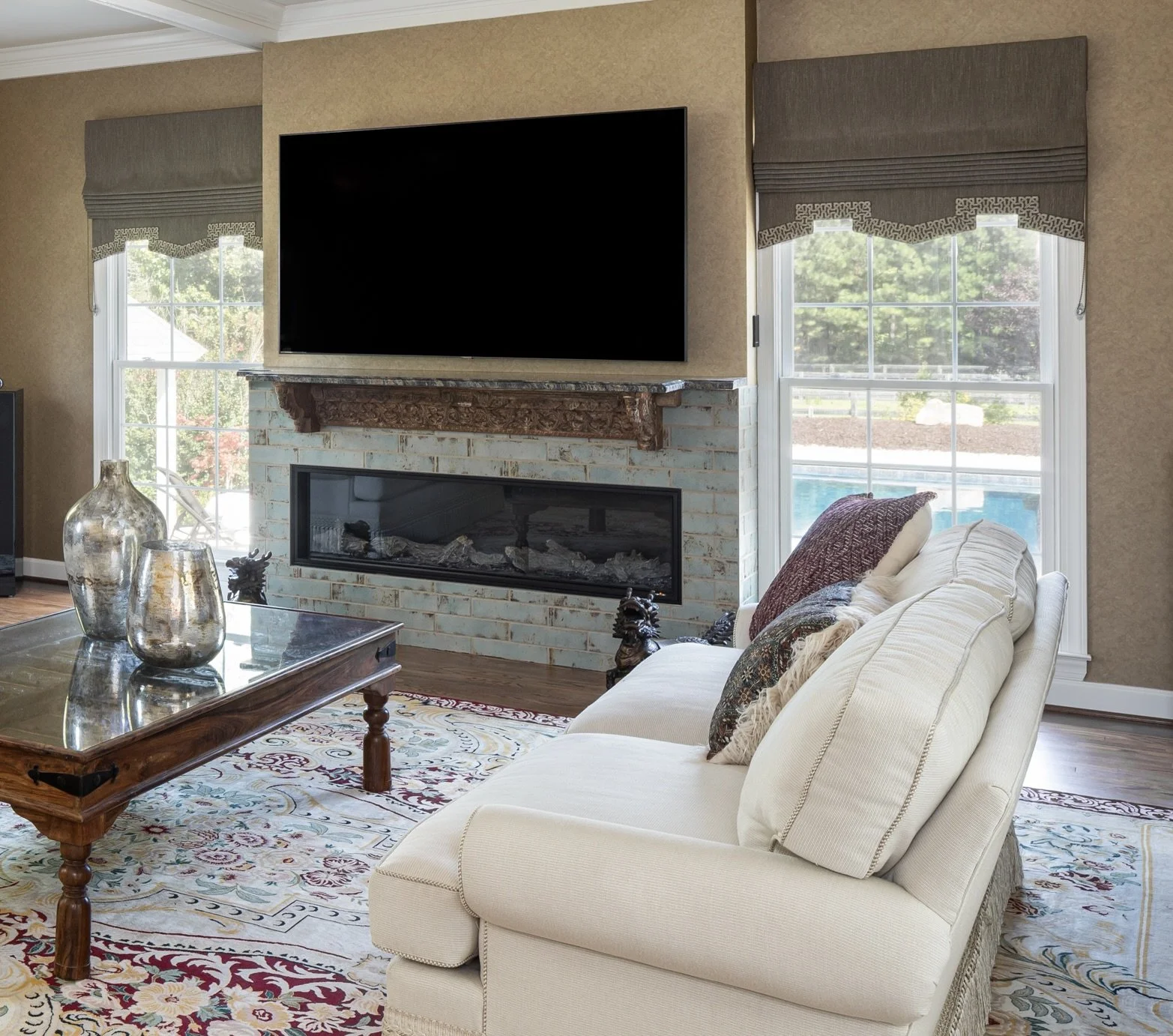Window blinds & why you need them
Window blinds: You may not think you need them but you do! How do you choose from all of the options?
Here are some key different types of window blinds and why we like them.
Roman shades
They’re great when you want a fabric window treatment, but can’t do curtains because of an obstruction (floor vent, radiator, limited wall space). This is actually a double shade treatment. A sheer fabric was used to provide privacy with sunlight, the top shade is total blackout. These really compliment the design of the room.
Wood blinds
These offer so many light filtering and privacy options. Up or down, tilted or straight. I show examples of both. I always like to team wooden blinds with drapes to give them a softer look.
Honeycomb shades
All three of these windows have blackout honeycomb blinds. They can be very discreet when open; or not seen at all when you tuck them up under a valence. The honeycomb construction offers insulating properties. We also like the top down/bottom up option for bathrooms.
Roller shades
These are streamlined and minimal. They can be raised 100% and disappear when not in use. These are available in blackout and light filtering in a variety of textures and colors. Make sure you get a sample and see how it changes from see-through to opaque when you go from day to night. See our video below to see the screens up and down.
The controls for shades and blinds vary. All can be a hazard if not installed professionally.
Continuous loop
This is almost always used for fabric shades and roller shades.
Cordless
A very discreet look.
Motorozed/remote controlled
This is an extreme example of motorized screen shades and a very complicated installation by MMIS and Lutron.
Need some advice on the right blinds for your space? Contact us today.








